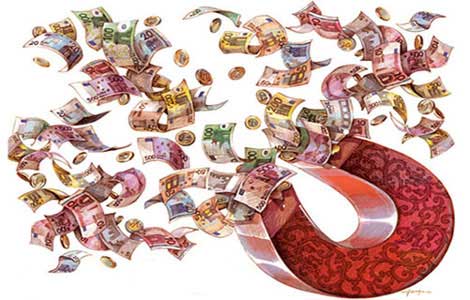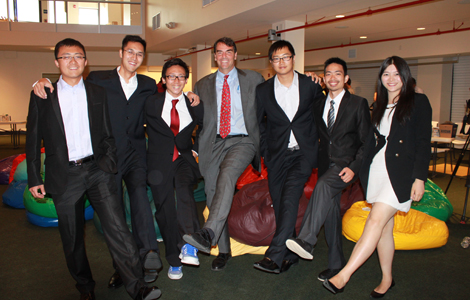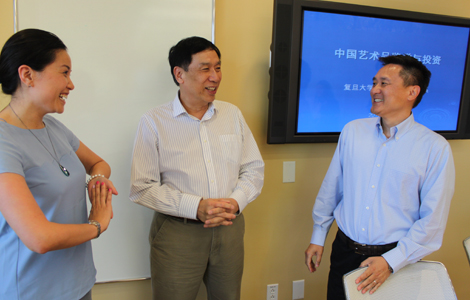Study peers into future of China's changing supply chains
Updated: 2013-08-06 11:00
By Chris Davis (China Daily)
|
||||||||

Hit with the double whammy of rising wages and a strong RMB, China is no longer the cheapest source for many products, and that's making companies look at shifting production elsewhere, "in search of the 'next China,'" according to recent research from the Wharton business school.
Low-cost labor has allowed China since the mid-1980s to become the pre-eminent manufacturing destination. But now those supply chains are reaching an "inflection point," according to Wharton's Marshall Fisher, UPS professor of operations and information management, and Wharton lecturer Edwin Keh.
Fisher visited China twice in the 1980s to set up business schools through Wharton and didn't return until 2006 when, among other things, he visited a little-known company called Foxconn. He said he was "shocked by their scale", as well as by all that had happened in China 20 years ago. "It was a wake-up call," he said.
He went back again in 2011, a time of huge labor unrest, including suicides at Foxconn, a Honda strike, and Wal-Mart, with whom he was meeting. All were nervous about their labor situation, he said. A colleague in China who had done his PhD under Fisher, told him: "You know, we always knew that wages in China were growing steady, at maybe 15 percent a year typically, and we knew that eventually they were going to hit a tipping point. And this is it. This was the sea change."
That competitive strategy that had existed for a quarter century had an end in sight, and companies had to figure out what to do. "The idea of change was very vivid that July when I was visiting China, and I think it's become more so with passing time," Fisher said.
Keh, who was formerly CEO and senior vice-president of Wal-Mart Global Procurement, says that the transformation in Chinese supply chains evolved almost unnoticed over several years. But he has been watching it closely.
"If you look at this on a quarter-by-quarter basis, you may not see it because it is not a singular event," he said, "but certainly it is a trend."
In their research, Fisher and Keh focused on major shifts in Chinese manufacturers:
Chinese companies - such as Foxconn (the main manufacturer of iPhones) and high-profile apparel provider Luen Thai - are either relocating or expanding operations away from coastal provinces where wages are high to less expensive areas like interior western China or India and Indonesia.
More Chinese contract manufacturers are building their own brands, pouring money into research and development and innovation and going after the Chinese domestic market.
As a prime example, Fisher cites the Goodbaby Group, the baby stroller-makers headquartered in Jiangsu in East China. According to Chinese statistics, Goodbaby controls about 70 percent of the juvenile-products market, with five R&D centers and 4,465 patents.
"What makes Goodbaby striking in that it is unusual and a harbinger of the future - where China is trying to go," said Fisher. "It competes on innovation."
Goodbaby was one of the pleasant surprises that Fisher said they found in their study, "after reading lots of articles in the Western press and even some by Westernized Chinese saying that China will not be innovative, that the educational system is stultifying, it kills creativity, the next Steve Jobs is not going to come from China. Here's a guy who was a school teacher, invents a product, starts a whole new company that's the largest most successful stroller manufacturer in the world? It looks a little bit like a Steve Jobs."
Another example of how the supply chains are shifting mentioned in their study is women's shoemaker Daphne, which started as a contract manufacturer. Over the years it has built its own brand and a domestic retail network with nearly 6,900 outlets, bringing in 2012 revenues of $1.3 billion and making them the country's top maker of women's footwear. Keh said that Daphne "serendipitously first created a great manufacturing capability and then a design capability to move further and further up the value chain".
According to the researchers, more and more Chinese suppliers and Western brands are setting their sights on the Chinese domestic market, which is getting more and more attractive with rising incomes and a burgeoning middle class. At the same time, Chinese suppliers are investing in lean management techniques to improve productivity and control costs.
Bottom line, Fisher says, is that "China needs to think about what will be the next chapter in its approach to growth".
Fisher says he thinks there will be an "exodus from China as a source of supply but it will be a trickle not a flood, which means the current strategy you can imagine an end in sight, but inertia's a powerful source and it will continue to be a viable strategy for quite a while."
Contact the writer at chrisdavis@chinadailyusa.com
(China Daily USA 08/06/2013 page2)

 First taste of test-tube burger close to meat
First taste of test-tube burger close to meat
 Govt urged to take care of parents who lose child
Govt urged to take care of parents who lose child
 1 dead, dozens injured in Urumqi bus fire
1 dead, dozens injured in Urumqi bus fire
 Lei Feng's African brother
Lei Feng's African brother
 EU SMEs target niche markets in China
EU SMEs target niche markets in China
 British couple caring for special children
British couple caring for special children
 Fly for adventure at US air show
Fly for adventure at US air show
 Kobe Byrant meets fans in Shenzhen
Kobe Byrant meets fans in Shenzhen
Most Viewed
Editor's Picks

|

|

|

|

|

|
Today's Top News
Dialogue defuses EU, China solar case
Drifting left, Asian American voters still back John Liu
Beijing sincere on S China Sea Code of Conduct
Washington Post sold to Amazon's founder
Fonterra says sorry for 'anxiety'
Obesity rate on the increase
Detroit Symphony brings China to NYC
Service sector drives up growth
US Weekly

|

|





